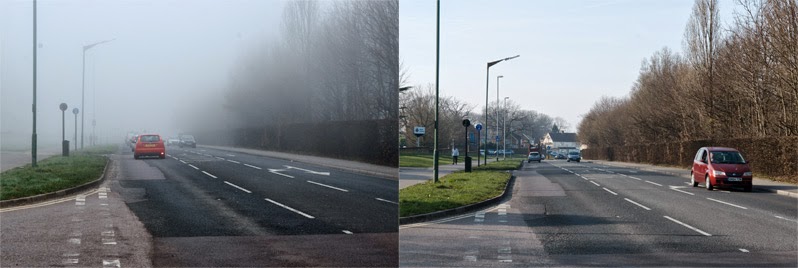Use of Fog Lights
Do you know the Highway Code guidance around the use of fog lights?
If,
upon seeing the first signs of mist in the air, you reach for the
button on the dashboard then you may want to dust off your copy of the
Highway Code. According to Rule 226 you "must use headlights when
visibility is seriously reduced, generally when you cannot see for more
than 100m (328 ft). You may also use front and rear fog lights." There
is no hard and fast rule that states when it is misty/foggy, you should
use fog lights - this is left to the driver and is a subjective
decision.
However,
having assessed the conditions and decided that fog lights are
necessary, there are some definite things which you should do. Firstly,
increase the gap between yourself and the car in front. Whilst this
may seem counter-intuitive - after all, given that visibility has been
reduced doesn't it make sense to close in other cars so that you can see
them - by increasing the gap between you and the car in front you are
giving yourself a safety cushion. You do not know how observant the
other driver is and, if they do not see something and have to react at
the last minute, you want time to bring your vehicle to a stop safely
whilst also managing the car following you so a multiple pile up is
avoided.
Secondly,
be aware that driving long distances with limited visibility can be
tiring. You will therefore need to plan more breaks than you might have
initially anticipated and allow time for your eyes to recover from the
strain you're placing on them.
Thirdly,
do not assume that just because you can see no lights that there is
nothing there. Whilst you have been conscientious and used your fog
lights (or dipped headlights if visibility is impaired but not less than
100m), not all road users are as good as you are! As an ex-driving
instructor of mine used to say "treat everyone else as a fool and you'll
seldom be disappointed". Therefore, before proceeding at any junction
or hazard, take time to double-check and consider winding down your
window to listen for engine noise. Sound can often carry better in fog
and this will give you some early indications that you're not alone!
Finally, once the fog has cleared, remember to turn off your fog lights.
Some top tips:
 |
| Remember the Sheppey Crossing incident last year? 130 vehicle pileup happened in the fog. But was it solely the fault of the weather? |
- When in traffic consider turning off rear fog lights. They are designed to improve your visibility to other road users and continual exposure at close range may dazzle the driver behind and mask your brake lights (thereby potentially causing a rear end shunt).
- Do not keep turning them on and off when going through patchy fog - make a decision and stick to it. Flickering lights will be more of a distraction to following cars than the potential dazzle.
- Only use fog lights if visibility is below the recommended 100m and, when they are used, slow down as well.
Post written by Neil Lakeland, Observer with the Kent Group of Advanced Motorists. Originally posted on the Mid-Kent Group of Advanced Motorists blog on 2nd October 2014
If you wish to know more about Advanced Motoring or wish to join us and become an Advanced Motorist, please vista out website for all the details.




Comments
Post a Comment